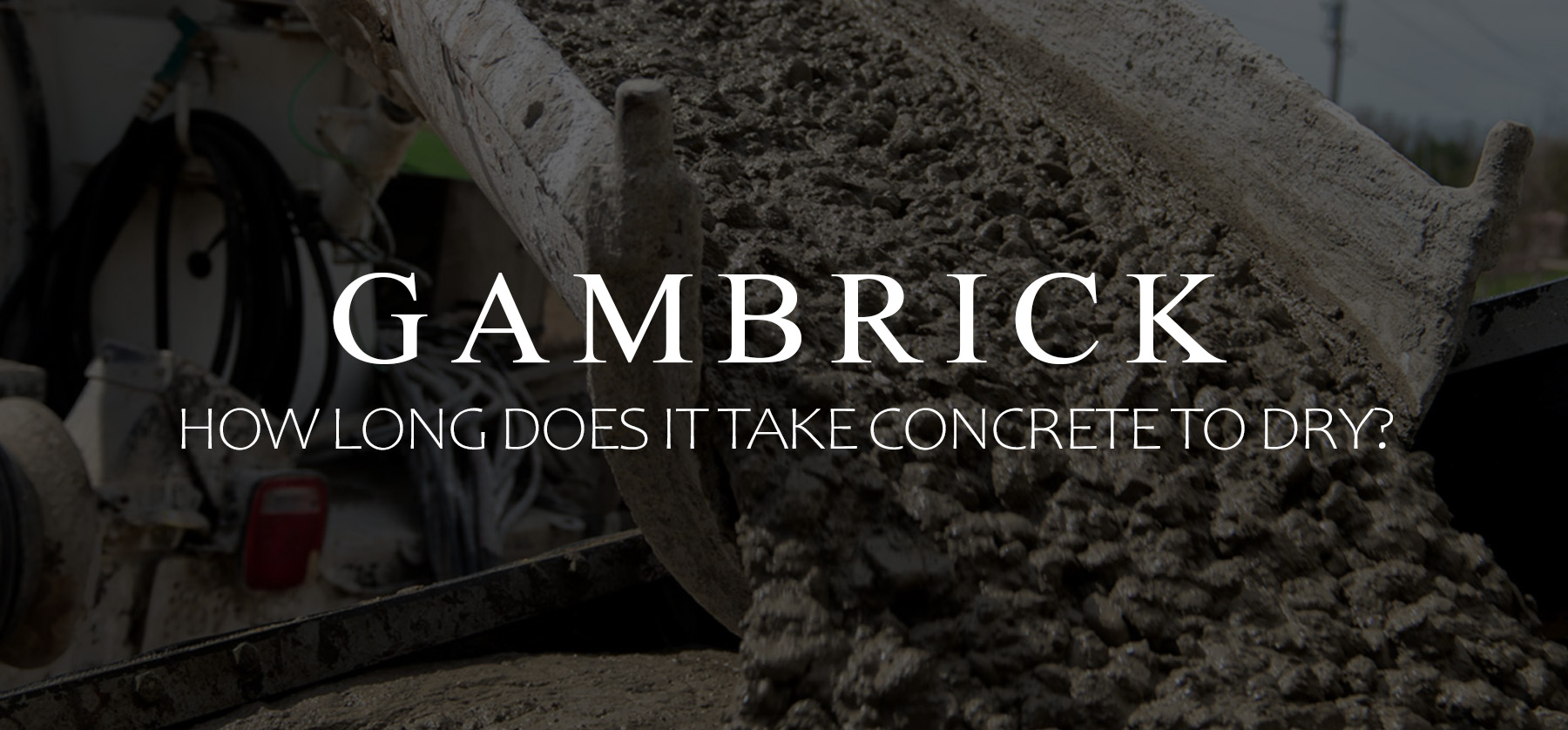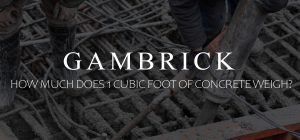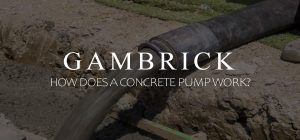
How Long Does It Take Concrete To Dry?
Concrete takes 24 to 48 hours to dry, a.k.a. set hard enough to walk on and 7 days to support cars and trucks. But curing and drying are very different. Dry concrete is another way of saying set concrete. I’ve been a mason for over 25 years and can tell you firsthand that it doesn’t take that long for concrete to dry hard enough for you to walk or drive on. But concrete takes about 28 days to cure to full strength. As it cures, the concrete continues to dry, harden and grow stronger.
When you buy concrete that’s 3500 PSI, what that actually means is 3500 pound per square inch of compressive strength at 28 days.
Concrete never actually stops curing, it continually hardens for it’s entire lifespan. However, it reaches full strength and a point where additional curing is so slow it’s unnoticeable. This is why builders consider 28 days to be fully cured. After that, there’s typically no significant strength gains to be made.
Concrete is a very strong material when dried properly, but it’s not sticky, which is why builders don’t use it much as a bonding material. Use grout or mortar instead.
When you pour fresh concrete it dries fast. You only have a small amount of time to work the concrete with trowels and floats before it gets too hard. This initial drying usually takes about 1 to 2 hours depending on weather conditions. Once it gets too hard, you can’t trowel it any more so you have to work fast during this small window.
If concrete isn’t cured and worked properly, it will be overly porous. This is bad inside the home because pores make it easier for mold to grow on concrete.
Initial Drying Times For Concrete
The question how long does takes concrete to dry is complicated to answer. This is because concrete goes through several stages of drying. The initial drying time is critical to understand because this is when masons work the concrete with hand tools. If you wait too long, the concrete will get too hard to trowel. Typically this first stage of drying happens an hour or two after the concrete is poured and only lasts about an hour. After that, the concrete gets too hard to trowel.
It’s impossible to say exactly how long concrete takes to initially dry because weather conditions effect it. In hot, dry weather it’ll dry faster for example.
After concrete is poured and starts to harden just a little bit, you can float it. This gets the concrete fairly smooth. But you generally don’t use hand tools at this stage, it’s still not hard enough to walk on.
Once the concrete gets dryer, about 1-2 hours after the pour, you can start working it with hand tools. Don’t stand right on the concrete, use a wide piece of wood or a kneeler pad to disperse your weight. Get down on your knees and use a trowel in a circular motion to smooth the surface.
This phase is also when you use edge tools, cut joints, apply stamps, color and other designs.
As Concrete Dries, It Grows Stronger And Harder
Concrete goes through different stages of strength and hardness as it dries. Its important to keep track of what stage of drying your concrete is in because that will tell you how strong it is.
Here is a simple guide. Keep in mind these times are approximates, every concrete pour has a different dry time based on weather conditions, temperature, the mix, additives, etc.
- You can use bull floats about 1/2 hour after the pour.
- At 1-2 hours the concrete is hard enough to work.
- After about 4-5 hours the concrete is hard enough to walk on but you’ll probably leave shoe prints.
- 24-48 hours in, your concrete can be walked on but I wouldn’t drive heavy equipment on it.
- At seven days, you should have concrete that is cured to 70% full strength or greater. It’s now safe to drive on.
- Full strength concrete is achieved after 28 days of curing.
How long does it take concrete to dry? It depends on what level of drying you’re asking about.
When Does Concrete Start Drying?
The concrete drying process, a.k.a. hydration, begins the moment you mix water with the dry concrete mix. Once the concrete and water are mixed together, you have a limited amount of time to pour it into the forms and work it because the clocks ticking. It starts drying, hardening and hydrating immediately.
Hydration continues over time, progressing through a number of stages until the concrete is completely cured.
During the drying process, rock hard crystals develop within the concrete that bind the sand and gravel together. This chemical reaction is what gives concrete it’s great compressive strength.
- If the concrete dries too quickly, the finished product won’t be as strong as it should be and could crack.
- Slow drying produces stronger concrete because it allows more time for crystals to form.
Concrete work is stressful because its on a timer. Concrete starts to dry immediately so once you mix it, be ready to work.
You can typically expect about an hour of work time to get the concrete into the forms, spread out, vibrated, and leveled before the mix begins to harden. During this time, it’s important that everyone knows what their job is and works quickly.
Preparation is key when working with concrete because it dries so quickly. You only get about 2-3 hours after mixing before the concrete is too dry to work. If you don’t get it done quickly, the project could be ruined.
You won’t have time to run out and buy supplies or tool so make sure you have what you need before you start mixing.
How Long Should Concrete Cure Before Putting Weight On It?
How long should concrete cure before putting weight on it? It depends on the weight and how its dispersed.
- After about 1-2 hours of drying you can work on concrete using a kneeler board.
- You should typically wait between 24-48 hours before walking on freshly poured concrete. After that it’s typically safe for normal foot traffic.
- After about a week, concrete is generally dry enough to handle the weight of cars, trucks and machinery.
- I typically wait about 2 weeks before framing on a freshly poured foundation wall.
- If you need concrete at maximum strength to support something extremely heavy, wait 28 days until its fully cured.
For most things, your concrete will be ready in a surprisingly short amount of time. Concrete is generally solid enough to walk on in 24-48 hours. By seven days, your concrete should be cured to approximately 70 percent of its full strength which is enough to support cars and trucks. In 28 days, your concrete is fully hardened and at maximum strength.
General concrete drying time frames:
- 24 to 48 hours: Forms can be removed and people can walk on the surface. Initial curing is done.
- 7 days: Concrete candle the weight of cars and trucks. Concrete is cured to around 70% its maximum strength.
- 28 days: At this point the concrete should be fully cured and at maximum PSI.
Dispersed weight is another way of saying spread out. After 1-2 hours you can start to trowel concrete but you have to use a kneeler board or other wide piece of flat wood. The wood disperses your weight over a wider area s the concrete can support it. If you stood on the concrete at this point you’d slightly sink in and leave shoe marks.
Walk On Time Varies By Mix
With a standard concrete mix, you can usually walk on the slab about 24-48 hours after finishing the surface.
Fast setting type of concrete mixes offer a walk on time of just three hours. They contain additives that make the concrete harden faster.
High strength concrete mixes typically have longer walk on times, so read the concrete bag carefully.These mixes dry slower which makes them stronger in the long run. But they’re not great if you’re in a hurry.
Most early high strength mixes, such as Quikrete 5000, have a walk time of about 10 to 12 hours.
Because mixes have different work and walk on times, it’s important to use the same type of mix throughout your project. Don’t blend mixes in the same pour because the concrete will dry unevenly.
Factors That Affect How Long Concrete Takes to Dry?
Concrete dry times are effected by all sorts of factors and are not consistent. This is where experience and a skilled mason come in handy. Especially in the first few hours when concrete is setting up. If concrete dries too fast, it may become impossible to trowel.
The main factors that affect concrete drying times include:
- Moisture: If there’s less water, the concrete will dry quicker which can cause hairline cracks. More moisture means slower drying which produces a stronger concrete. Hot ambient temperatures and wind speed up the evaporation of moisture. Temperature also has an impact on concrete setting time.
- Temperature: When it’s hotter, moisture evaporates making your concrete dry faster. You can cover the concrete with blankets or plastic to hold moisture on the surface. Drying too fast is bad for concrete because it causes cracks.
- Mixture: Accelerants can be used to make concrete dry faster. While this speeds up setting time, your concrete still needs to cure to achieve full strength. Although additives can be used to make concrete cure faster too. Mix design has a lot to do with concrete dry times. Some jobs require additives because the concrete needs to be usable right away. But be aware, accelerants can result in a weaker overall concrete if you don’t cure it properly.
Moisture plays a critical role in determining concrete’s dry times.
- If there isn’t enough moisture, the concrete will dry too fast which results in cracks.
- Too much moisture in the finishing step will weaken the top layer and cause flaking.
- Too much water in the mixture will create weaker concrete even though it’ll dry slower.
Controlling moisture and drying times are both very important parts of concrete work.
Hot Weather Greatly Effects Concrete Dry Times
Don’t underestimate the power of weather on concrete. Its a huge factor when determining concrete dry times and the job schedule. You can’t go into a concrete pour with the same timeline in hot weather as you can on a beautiful spring day or a cold winter. Each condition needs different preparation because dry times will vary.
In hot, dry weather, especially if you’re pouring in direct sun, the heat can draw water out of wet concrete quickly. This reduces pour time to as little as 30 minutes. Be prepared to work fast in the heat because the concrete will dry really quick.
Hot weather also dries the surface too fast which can cause cracks. Keep that surface moist.
It’s best to pour on a day when the temperature is between 60 to 80 degrees Fahrenheit. If you do have to pour in hot weather, the following tips can help:
- Use cold mixing water. The chemical reaction inside concrete produces internal heat, cool water will help cool this down a bit.
- Wet down the forms and ground before pouring. This will keep them from drawing water out of the concrete too quickly.
- Store bags of concrete in the shade. The sun can increase the dry mix’s temperature.
- Schedule the pour during the early morning when temperatures are cooler.
- Schedule extra workers because work time will be less.
- Use curing blankets to keep the concrete cool.
- Cover the concrete with plastic sheeting to keep moisture at the surface.
- Spray mist on the surface to keep it damp and prevent fast drying.
Finish Work Effects Concrete’s Dry Time
In most concrete projects, I spend half the time pouring and leveling the concrete, and half the time finishing it. If the concrete mix has approximately one hour of work time (work time is listed on the bag), plan to spend 30 minute pouring and screeding and 30 minutes troweling.
The first step is screeding the surface. Screeding is the process of removing excess concrete by leveling the top level of the slab. A 2×4 or metal screed can be used to do this. Move the straight edge in a sawing motion back and forth as you pull the screed towards you across the slab to make it flat. One pass is each direction is usually enough to achieve the desired result. As you screed, excess concrete and water will be pulled off the slab.
- Finishing concrete involves using a concrete float to smooth out the surface.
- Jigs can be used to knock rocks down from the surface.
- Kneeler boards make working on concrete possible.
- Hand troweling makes the surface very smooth.
- Brooms can add a textured finish.
- Edge tools create rounded edges.
- Grooving tools create control joints.
The larger the slab, the longer it takes to finish, so keep that in mind and work quickly. Don’t pour more concrete than you can handle or it’ll dry out before you can finish it properly.
If the concrete is hardening too fast, skip the control joints and focus on finish work. You can cut the control joints with a concrete saw later.
Finish work draws moisture out of the concrete. So make sure you don’t over work the concrete. masons know exactly when and how much finish work a slab needs. If you’re unsure, start a little early so the concrete doesn’t dry out on you. If you’re new to concrete work, start soon after you screed the concrete. As soon as it starts to dry and harden start smoothing.
How Long Does Concrete Take to Cure Completely?
Concrete takes 28 days to cure to full strength. If you buy 3500 PSI concrete, that means the mix has 3500 pounds per square inch of compressive strength at 28 days. This assumes you mixed the concrete with the right amount of water and cured it properly.
Even though concrete cures to full strength at 28 days, that doesn’t mean it stops curing. Concrete hardens as its cement particles react and bond with water. Even after achieving full strength, the concrete keeps getting slightly harder over time. However, this process is so slow that it’s barely detectable.
This continual hardening is called hydration. As long as cement particles are in contact with moisture, they will continue to form bonds and harden the concrete.
The entire curing process takes about a month, but your concrete will be ready for use much sooner. Each project’s timeline is slightly different due to weather, the concrete mix, location and finishing techniques.
What Is Curing And What Does It Do To Concrete?
Curing gives the concrete what it needs to dry, hydrate and gain strength.
Curing is a chemical process that occurs between water and cement molecules.
- Concrete strength depends on the growth of crystals inside the concrete.
- These crystals grow from a reaction between Portland cement and water.
- This reaction known as hydration.
If there isn’t enough water for the amount of cement in the concrete, the crystals can’t grow properly and the concrete doesn’t develop the strength it should. But if there is enough water, the crystals grow out and bond with sand and gravel to form rock hard concrete.
However, too much water is just as bad as not enough. It waters down the mix making concrete weak and brittle.
Curing serves a few purposes:
- It retains moisture in the slab so the concrete continues to hydrate and gain strength.
- It delays drying shrinkage until the concrete is strong enough to resist cracking.
- Properly cured concrete improves strength, durability, water tightness, and wear resistance.
Another important aspect of curing is temperature. Concrete can’t be too cold or too hot.
Drying Cold Concrete
As concrete dries, hydration slows down. When the concrete’s internal temperature reaches about about 50 F, hydration slows down, below 40 F and it virtually stops. You can check the temperature of your concrete and monitor its dry time with a heat gun.
If concrete is allowed to freeze to quickly, the frozen water inside will create pressure that could destroy the concrete. For this reason, its important to keep the concrete about 40 degrees until the concrete is strong enough to resist freezing pressures. This usually takes about 48 hours.
Use curing blankets after the concrete is poured to keep it warm and above freezing. Keep the blankets on for about 2-3 days. The longer you keep them on the better it is for the concrete.
Drying Hot Concrete
Hot concrete can dry too fast which can cause cracks. It’s very important to keep the surface moist in hot weather. Mist water onto the concrete surface as the water evaporates.
You can also spread plastic sheets over the top of the concrete or use cooling blankets. Both trap moisture on the surface as it evaporates which keeps the concrete moist and prevents cracking.
Internally, cement that reacts too quickly doesn’t have time to grow crystals so it doesn’t develop as much strength as it should. Concrete needs to cure slowly which means regulating its internal temperature.
Concrete Blankets
Heating or cooling blankets can be used to alter the dry times of concrete. After the concrete is poured and hardens enough to work, typically 1-2 hours, blankets can be laid on top to insulate it.
- In extremely hot weather, blankets keep the concrete cool and slow down evaporation. Moisture is kept at the surface which helps prevent cracking.
- In extremely cold weather, blankets keep the concrete warm which allows it to dry properly. Drying concrete can never be allowed to freeze.
Not all concrete blankets are made the same. Make sure you buy one designed to work in the way you need. Buy hot blankets for working concrete in cold weather, and cooling blankets for hot temperatures.
- Concrete cooling blankets act like portable cooling equipment that keeps freshly poured concrete safe from heat. They control concrete dry time in hot conditions. Many include both a cooler and chiller for better results.
- Circulation blankets draw heat to the blanket which cools the concrete.
- Cooling blankets draw heat away and lower the temperature of the concrete.
If conditions are very cold, concrete insulating blankets provide a way to dry concrete effectively and prevent freezing. Freezing has a devastating effect on concrete so it must be prevented at all costs. If the water inside of your concrete freezes, the internal pressure could destroy the concrete.
As concrete dries, it must evaporate moisture out. This needs to be kept above freezing too as the moisture hits the cold outside air.
Concrete insulating blankets keep both the inside water and evaporated moisture above freezing so drying and hydration can occur.
The type of blanket and how its blanket used will have a big impact on your concrete’s dry time.
How Long Does It Take 4 Inches Of Concrete To Cure?
4 Inches of concrete dries in stages.
Keep in mind that weather conditions effect concrete’s dry times and so does the mixture you use. Fast setting concrete mixes will generally set faster than high strength mixes because that’s what they’re designed to do.
Below we’ll detail the average 3500 – 4000 PSI concrete mix that doesn’t have any accelerants or additives. I’m also assuming you’re using the correct amount of water and the weather is ideal, between 60 and 80 degrees F. Here’s a breakdown of what you can expect:
- In 1-2 hours after pouring the concrete can be worked using kneeler boards.
- 4 Inches of concrete will be dry enough to walk on in 24 to 48 hours.
- It will be dry enough to drive on in 7 days.
- The slab will be fully cured at 28 days.
Thicker concrete doesn’t change this timeline much. I’ve poured concrete ranging from 2 inch dust caps to 12 inch slabs and the dry times are pretty much the same. I generally add a little bit of time to the project for thicker concrete but not much, maybe 1/2 hour in total. Thick concrete can set up slower. In my experience, weather conditions, water and the mixture effect dry times more than its thickness.
How Long Does Concrete Take To Dry Indoors?
The great thing about drying concrete indoors is that you can temperature control the environment which makes dry times consistent and reliable. You won’t have hot direct sunlight to deal with or frigid cold. And wind probably won’t be an issue either.
You can also install fans to keep surface temperatures down or use a mister to keep the concrete damp. Drying concrete is much easier indoors because you have so much control.
- In 1-2 hours after pouring the concrete can be worked using kneeler boards.
- 4 Inches of concrete will be dry enough to walk on in 24 to 48 hours.
- It will be dry enough to drive on in 7 days.
- The slab will be fully cured at 28 days.
How Long Should Concrete Dry Before Removing Forms?
I typically wait 48 hours before removing my forms. But it depends on the project and the size of the forms.
- For a basic 4-6 inch slab, I almost always remove the forms after 48 hours.
- When building poured foundation walls, I wait anywhere from 7-10 days. It’s probably safe to remove them after 48 hours but since these are structural, I like to play it safe and wait longer.
Keep in mind that outside factors effect concrete’s dry times. In extremely cold weather, concrete will cure slowly. You have to adjust for this by keeping the forms on for much longer. In really cold weather I may keep foundation forms on for 20 days. Taking them off before the concrete has hardened can make the foundation break.
If you remove flat work forms too soon in cold weather the edges can crack or crumble.
As a general rule of thumb, I keep concrete forms on much longer in cold weather.
This typically isn’t an issue in hot weather because concrete dries much quicker.
Summary: How Long Does It Take Concrete To Dry?
Concrete takes 24 to 48 hours to dry, a.k.a. set hard enough to walk on and 7 days to support cars and trucks. But don’t confuse the time it takes concrete to dry with how long it takes to cure. Curing and drying are very different. Dry concrete is another way of saying set concrete. It doesn’t take that long for concrete to dry enough for you to walk or drive on it. But although it may look totally hard, curing to full strength typically takes 28 days to complete. As the concrete cures, it continues to dry, harden and go stronger.
When you buy concrete that’s 3500 PSI, what that actually means is 3500 pound per square inch of compressive strength at 28 days. Concrete never actually stops curing, it continually hardens for it’s entire lifespan. However, it reaches full strength and a point where additional curing is so slow it’s unnoticeable. This is why builders consider 28 days to be fully cured. After that, there’s typically no significant strength gains to be made.
When you pour fresh concrete it dries fast. You only have a small amount of time to work the concrete with trowels and floats before it gets too hard. This initial drying usually takes about 1 to 2 hours depending on weather conditions. Once it gets too hard, you can’t trowel it any more so you have to work fast during this small window.
Concrete must maintain the proper temperature and dampness for curing. Improperly cured concrete will be weak, brittle, prone to cracking and possibly even structural failure.
When working with concrete, it’s important to understand how long it takes to dry from initial pour to fully cured.
If you have any questions about concrete dry times, Email any time.

John Mazzuca | About | More Posts |
Custom Home Builder
John Mazzuca is a custom home designer and builder at Gambrick with over 25 years experience in the construction industry. John has designed, built and/or remodeled hundreds of homes, small buildings, and commercial projects. He writes about business, real estate, home building, and household electronics. His work has been featured in Fox Business, Better Homes & Garden, House Beautiful, and more.




















